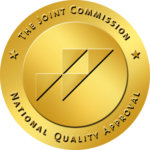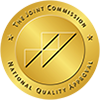Ketamine is a powerful substance that has grown in popularity both for its medical uses and its potential for abuse. Initially developed as an anesthetic for humans and animals, ketamine is now used in controlled medical settings for treating depression and chronic pain. However, outside of these uses, it’s become a drug of abuse known for its dissociative and hallucinogenic effects.

Ketamine: A Medical Perspective
Ketamine was first developed in the 1960s as an anesthetic, valued for its ability to sedate patients without depressing their respiratory systems. It’s still used in medical settings, particularly in surgeries or for patients experiencing severe pain. More recently, it has also been used in low doses to treat depression and post-traumatic stress disorder (PTSD). When administered under medical supervision, ketamine can provide quick relief for those struggling with mental health conditions that haven’t responded well to traditional treatments.
Ketamine’s effectiveness in these settings has led to its increased use in therapeutic contexts. However, this same drug has a dark side—when used outside of a controlled environment, it carries significant risks. The dissociative and hallucinogenic properties that make it useful in clinical settings can lead to dangerous side effects and addictive behavior when misused.
The Rise of Ketamine Abuse
Ketamine abuse has become more prevalent over the years, especially in recreational settings. It is often used at parties and clubs for its hallucinogenic effects, causing users to feel detached from reality or their surroundings. This “out of body” experience can seem appealing, but it comes with severe risks, including cognitive impairment, psychological dependence, and physical harm.
Unlike many other substances, ketamine doesn’t always produce the same euphoric effects that drugs like cocaine or heroin might. Instead, it induces a trance-like state, which can appeal to individuals seeking an escape from their problems or stress. Unfortunately, what starts as occasional use can quickly spiral into ketamine abuse, where the individual becomes dependent on the drug to function or feel normal.
Some of the risks associated with ketamine abuse include:
- Memory loss
- Impaired motor function
- Anxiety and depression
- Hallucinations and delusions
- Risk of overdose
The Dangers of Long-Term Ketamine Use
While the short-term effects of ketamine use can be troubling, long-term abuse carries even more serious consequences. Regular ketamine users may experience bladder and kidney damage, often referred to as “ketamine bladder.” This condition is characterized by urinary incontinence, painful urination, and even permanent bladder dysfunction. In some cases, the damage can be so severe that it requires surgery or other invasive treatments.
Ketamine abuse can also lead to lasting mental health problems. Chronic users often develop cognitive deficits, including memory loss and impaired decision-making abilities. Prolonged use may also increase the risk of developing anxiety disorders or severe depression, further exacerbating the cycle of addiction.
Moreover, ketamine’s dissociative effects can lead to dangerous behavior. Users under the influence may become unaware of their surroundings, putting themselves at risk of accidents or injuries. This is especially concerning in situations where they might be driving or operating machinery while under the drug’s influence.
Recognizing the Signs of Ketamine Abuse
Recognizing the signs of ketamine abuse in yourself or a loved one is the first step toward getting help. Some common indicators of ketamine abuse include:
- Increased tolerance: The need to use more of the drug to achieve the same effects.
- Withdrawal symptoms: Anxiety, confusion, and depression when not using ketamine.
- Neglecting responsibilities: Failing to meet work, school, or personal obligations due to drug use.
- Social withdrawal: Spending more time alone or with others who abuse ketamine.
- Physical symptoms: Memory loss, bladder issues, and frequent disorientation.
If any of these signs are present, seeking help is essential. Ketamine abuse is not only harmful to the individual’s health but also to their relationships, career, and overall well-being.
Treatment for Ketamine Abuse
Fortunately, ketamine addiction can be treated with the right approach. Addiction treatment centers like 12 South Recovery offer comprehensive programs that focus on both the physical and psychological aspects of addiction. Treatment for ketamine abuse typically involves:
Detoxification
The first step in recovery is clearing the drug from the body. Medical detox can help manage withdrawal symptoms and make the process safer.
Therapy
Cognitive-behavioral therapy (CBT) and other therapeutic approaches are used to address the underlying reasons for ketamine abuse and develop healthier coping mechanisms.
Support Groups
Group therapy and support from others in recovery provide a sense of community and accountability, which can be crucial for long-term sobriety.
Aftercare
Ongoing support after treatment is essential for preventing relapse. This may include continued therapy, support groups, and check-ins with medical professionals.
Recovery from ketamine addiction is possible, and with the right help, individuals can rebuild their lives free from the harmful effects of ketamine abuse.
Contact Our Team
Ketamine, while valuable in medical settings, becomes dangerous when misused. The effects of ketamine abuse can lead to severe physical, emotional, and psychological damage. If you or someone you know is struggling with ketamine abuse, it’s important to seek help as soon as possible. At 12 South Recovery, we specialize in addiction treatment, offering personalized care to help you or your loved one overcome ketamine abuse and achieve lasting recovery. Contact us today to learn more about our treatment options and take the first step toward a healthier, drug-free life.


















